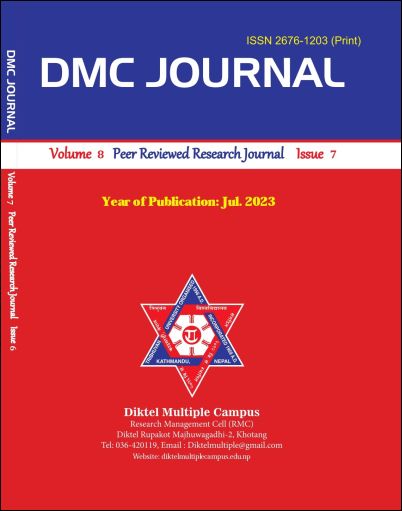Socio-Economic Status and Fertility Behavior among Tamang Women in Bhaktapur
DOI:
https://doi.org/10.3126/dmcj.v8i7.62435Abstract
This study "Socio-Economic Status and Fertility Behavior among Tamang Women in Bhaktapur District" was carried out with the main objective of to identify the socio-economic status and fertility behavior among the Tamang women in the study area. The study included 169 married Tamang women of reproductive age group selected from census method. By conducting this research it is concluded that most of the women get married at the age of 15-20 years. Which was 48.5 percent of the total in the same way education, economic status, religion, occupation and family income were the dominant socio-economic factors of affecting the fertility behavior.
Out of 169 respondents in the study area, 69.82 percent respondents were literate and 30.17 percent population was illiterate. Out of 169 respondents 60 percent were engaged in the agriculture sector, followed by 25 percent of hose hold workers. Most of the respondents were using family planning method for limiting birth. From the viewpoint of effects of socio-economic variables on fertility behavior, medium income group was 66.27 percent, low income 19.52 percent and high income was 14.20 percent. In education field, illiterate 30.17 percent, secondary level 79.66 percent and higher level 20.33 percent. In occupation involved in agriculture was 60.35 percent, household chose 24.85 percent, business 16.05 percent and other 4.73 percent. Similarly this study had found that the total number of respondents with their average CEB was 2.52 per family.
High fertility culture was shown by these people. Lower fertility, behavior was associated with literacy and having higher age at marriage. It is argued that fertility remains high due to high child mortality. High fertility has ensured high dependency and family burden. Similarly current skewed distribution of population towards the younger ages would result high fertility level in the years to come.




